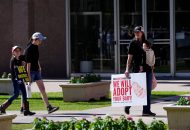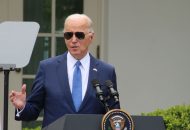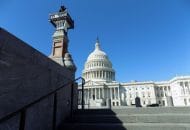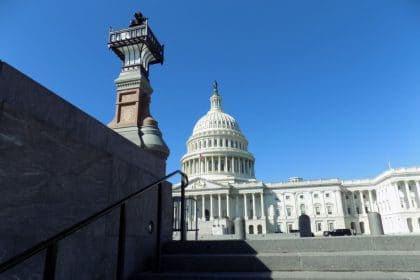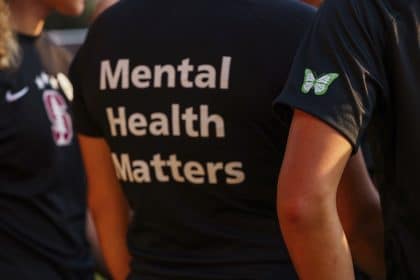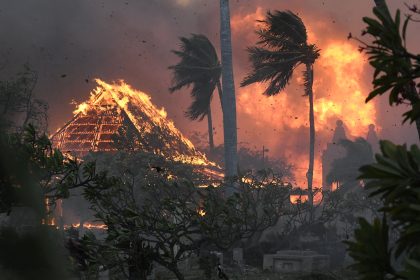Congress: Listen to Young People on Gun Violence
COMMENTARY

President Donald Trump neglected to mention gun violence in his State of the Union address.
The following day, the congressional stalemate over what to do about the killing and mayhem played out at a House Judicial Committee hearing on gun violence. Most of the news coverage focused on a disgustingly misleading diatribe from Florida Republican Rep. Matt Gaetz, who tried to use the hearings as a forum to push for a wall at the U.S. southern border.
Overshadowed were the most powerful two speakers to testify before the committee. They were two young women, who happen to be diametrically opposed in their views on gun rights. Both spoke hurriedly, reading statements in the five minutes they were allowed to speak, too brief a span to describe the events that changed their lives.
Savannah Lindquist, 24, testified about what happened to her in the fall of 2016. She was in her senior year at her dream university, she said, finishing up studies in her dream major. Her prospects as a first-generation college graduate looked bright.
Then she was raped. The violence left her “completely shattered.”
Lindquist did what so many other college women do after they are sexually assaulted. She dropped out, fleeing not only to her childhood home but to her childhood bedroom. Isolated and deeply traumatized, she gained 100 pounds and her hair began to fall out.
Lindquist, a gun owner, told the committee that she had obeyed the laws of her state and did not carry a concealed firearm on campus.
“Because of so-called common-sense gun control laws, I was left defenseless that night,” Lindquist testified.
She asked the committee at least to consider the concerns of conscientious gun owners, people who might be negatively affected by new restrictions.
“I obeyed the law as a responsible gun owner, and it ended in me being raped,” she said.
Aalayah Eastmond, 18, spoke before Lindquist.
Her story is likely more familiar. She’s a senior at Marjory Stoneman Douglas High School in Parkland, Fla.
Nearly a year ago, on February 14, 2018, a gunman killed 17 students and faculty at her school. Eastmond survived by hiding under the dead body of her classmate.
One moment Nicholas Dworet was her partner during their studies of the Holocaust in their fourth period class. The next, he was a lifeless shield that protected Eastmond as “bullets riddled my classmates,” she said.
Eastmond told of how her mother, consumed by the stress, miscarried a baby shortly after her daughter so narrowly escaped death.
She accurately noted that African-American and Latino communities suffer the highest rates of deaths by gun homicide. She lost an uncle who was shot and killed in Brooklyn at the age of 18.
“Rather than listen to special interests, I urge you to listen to America’s young people,” Eastmond told the Judiciary Committee.
Lindquist had a message too. “In this debate, it is about emotion,” she said. Facts and viewpoints like hers, matter less.
The two young women were seated side-by-side. They clearly heard the power of each other’s testimony.
There is a way for Congress to fairly address both women.
And that is to remain focused on gun violence as a public health crisis rather than as a political talking point.
Nearly 40,000 Americans died by guns in 2017. They were shot in homicides, in acts of domestic violence and in accidents, which are nearly always preventable. And the largest category gun deaths is suicides.
One of the outrageous aspects of our national problem with gun violence is how haphazardly it has been studied. The data sets we have are incomplete and in some cases cherry-picked. It is not an exaggeration to say that the gun lobby has consistently undercut government funding for research into gun violence.
Amid the lack of statistical understanding, gun rights zealots have spread a lot of nonsense about the effectiveness of gun-free zones. They also like to moan that “laws already on the books” have failed to stop some dangerously mentally ill person whenever it’s convenient to explain away a mass killing, without mentioning their strenuous efforts to defang any law that might keep guns out of the hands of anybody, no matter how risky.
Eastmond believes that is going to change. “We are the generation that will end gun violence,” she told the committee.
That may well be true. But only if young people continue showing up, speaking out and being more honest about gun violence than their elders.
—
Readers can reach Mary Sanchez at [email protected] and follow her on Twitter @msanchezcolumn.
© 2019, MARY SANCHEZ DISTRIBUTED BY TRIBUNE CONTENT AGENCY, LLC









